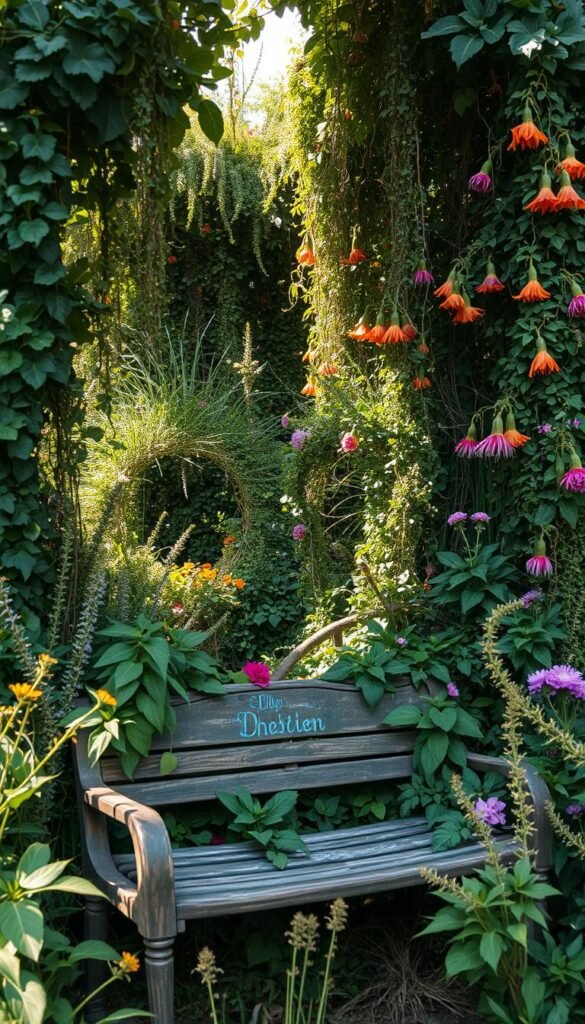Ever feel torn between wanting a picture-perfect garden and letting nature take the wheel? You’re not alone. Across backyards and TikTok feeds, gardeners are debating two distinct paths: meticulously planned layouts versus wild, untamed plots bursting with surprises. Both styles have deep roots in history—from Victorian-era symmetry to cottage gardens that celebrate imperfection.
What makes this trend exciting? It’s about more than aesthetics. A free-flowing approach lets you scatter seeds freely, creating habitats for pollinators and boosting your local ecosystem. Meanwhile, structured designs offer clarity and ease, especially if you’re growing food or crave tidy rows. The magic happens when you blend both philosophies.
Think of your outdoor space as a canvas. Maybe you’ll plant orderly herb spirals near rambling wildflowers. Or let veggies mingle with native blooms that attract butterflies. This guide will help you explore techniques, from companion planting to strategic wild zones, so your garden reflects your rhythm—not rigid rules.
Ready to dig into the benefits? We’ll break down how balancing spontaneity with intention can save time, support biodiversity, and spark joy. Whether you’re a newbie or seasoned green thumb, there’s room to experiment. Let’s grow something uniquely yours.
Discovering Chaos vs. Structured Gardening: Finding Your Personal Style

What if your garden could reflect both your creativity and nature’s unpredictability? That’s the heart of today’s gardening debate. On one side, structured gardens thrive with crisp edges and planned layouts. On the other, free-flowing chaos gardens celebrate surprises—like sunflowers sprouting beside tomatoes or herbs mingling with marigolds.
TikTok’s green-thumb community is buzzing. Influencer @meggrowsplants says: “I stopped worrying about rows and let my seeds fall where they wanted. Now, my yard feels alive!” This shift isn’t just trendy—it’s practical. By scattering seeds loosely and using native plants, you’ll attract pollinators and cut maintenance. No strict rules, just healthy soil and curiosity.
New to planting? Chaos gardening simplifies your start. Toss a wildflower mix, add veggies, and watch magic happen. Prefer order? Define a small herb spiral or raised bed. The key is blending both worlds. Maybe line a neat pathway with unruly lavender or let climbing beans frame a tidy salad patch.
- Why experiment? Structured spaces offer clarity; wild zones spark joy.
- Need inspiration? Visit local parks or scroll #ChaosGarden on Instagram.
Your outdoor space is a playground. Whether you’re growing food or flowers, let intuition guide you. After all, the best gardens grow from your rhythm—not a rulebook.
Understanding the Roots: Structured vs. Chaos Gardening Philosophy
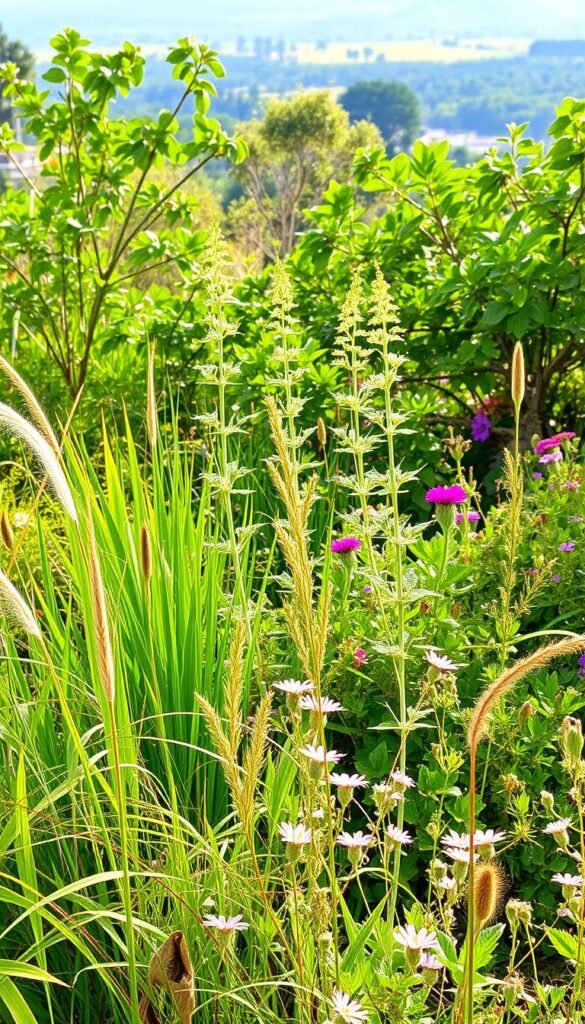
From medieval herb beds to viral TikTok plots, garden design reflects our evolving relationship with the earth. Centuries ago, farmers mixed crops and flowers for practical reasons—think pest control and soil health. Today’s wild-looking plots share that same spirit, proving innovation often circles back to tradition.
Traditional Techniques vs. Modern Trends
Old-school cottage gardens weren’t just pretty—they were survival tools. Families packed veggies, herbs, and blooms together to maximize space and deter pests. Sound familiar? It’s the same mix-and-match philosophy behind chaos gardening, just with a hashtag.
Victorian-era gardens swapped practicality for precision, favoring geometric layouts. Yet both styles have merit. Structured designs prevent overcrowding, while freeform planting mimics nature’s resilience. The key is borrowing from each: maybe a tidy herb border framing a self-seeding wildflower patch.
The Role of Native Plants and Biodiversity
Whether you lean orderly or wild, native plants are non-negotiable. They’re adapted to your region’s soil and climate, needing less water and zero chemicals. Plus, they feed local pollinators. Imagine monarch butterflies flocking to milkweed or bees buzzing around purple coneflowers.
Healthy soil ties it all together. Skip tilling—it disrupts microbial life. Instead, layer compost and let earthworms do the work. Even small interventions, like scattering clover seeds between pavers, boost biodiversity without cramping your style.
So, what’s the takeaway? History shows us that the best gardens balance human ingenuity with nature’s wisdom. Your plot can honor both—no rulebook required.
The Rise of Chaos Gardening in the Digital Age
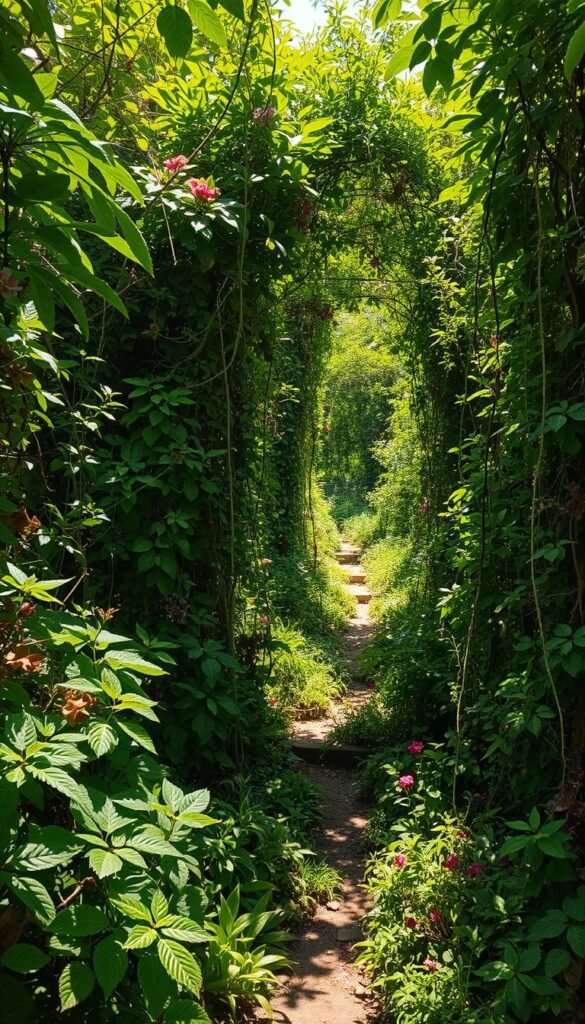
Social media has turned gardening into a global conversation where wild beauty thrives alongside curated feeds. Platforms like TikTok and Instagram now fuel a movement where imperfection isn’t just accepted—it’s celebrated.
Viral TikTok Trends and Gardening Influencers
When @meggrowsplants posted a video tossing handfuls of seeds into her yard, it racked up 2 million views. Comments flooded in: “This is how nature intended!” and “Finally, gardening without stress.” Similarly, urban gardener Melanie transformed her balcony using a wild aesthetic approach, proving small spaces can buzz with life.
| Aspect | Traditional Gardening | Digital-Age Trends |
|---|---|---|
| Seed Planting | Precise rows | Scatter-and-grow method |
| Design Inspiration | Magazines/books | TikTok tutorials |
| Community Engagement | Local clubs | Global hashtags like #NoPlanGarden |
Social Media’s Impact on Gardening Habits
Platforms encourage experimentation—like mixing veggies with native plants to attract pollinators. A recent viral TikTok video showed sunflowers sprouting through tomato vines, sparking thousands of recreations. This isn’t just a trend; it’s a shift toward gardens that work smarter, not harder.
Your feed might inspire a corner where herbs mingle with marigolds or a pathway edged with self-seeding blooms. The digital age proves that letting go can lead to richer, more resilient spaces—both online and in your soil.
Why You Should Embrace the Chaos in Your Garden
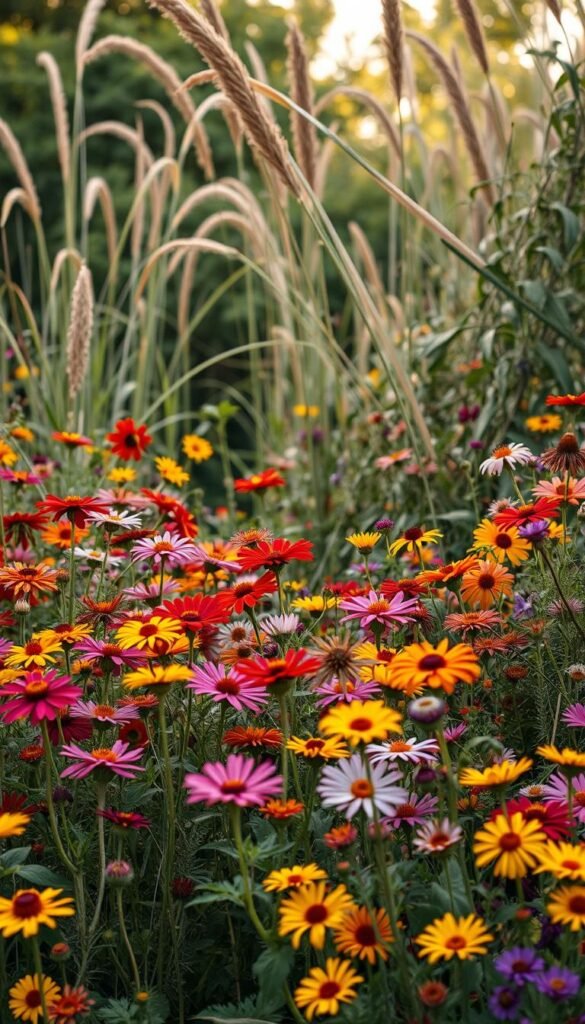
Gardening doesn’t have to be a chore—let nature’s rhythm create beauty while you step back. What some call “messy” is actually a smart approach that strengthens your plot’s resilience. As influencer Meagan Lloyd puts it: “When I stopped micromanaging my plants, they started thriving on their own terms. Now I have butterflies where I once had aphids.”
- Nature knows best: Scattering seeds mimics how plants grow in the wild, leading to stronger root systems and pest-resistant plants.
- Less work, more joy: Skip rigid pruning and watering schedules. Wildflowers like coneflowers or poppies bloom freely, saving you time.
- Diversity delivers: Mixed plantings attract pollinators and create microhabitats, boosting your garden’s health.
One urban gardener transformed her balcony by tossing a chaos gardening seed mix into pots. Within months, she harvested herbs alongside edible blooms like nasturtiums. The result? A space that feeds both her family and local bees.
This isn’t about neglect—it’s trusting natural processes. Let carrots cozy up to marigolds, or let dill sway between tomatoes. You’ll gain a lively ecosystem that’s as practical as it is pretty. Ready to trade control for wonder?
Essential Tips for Starting Your Chaos Garden
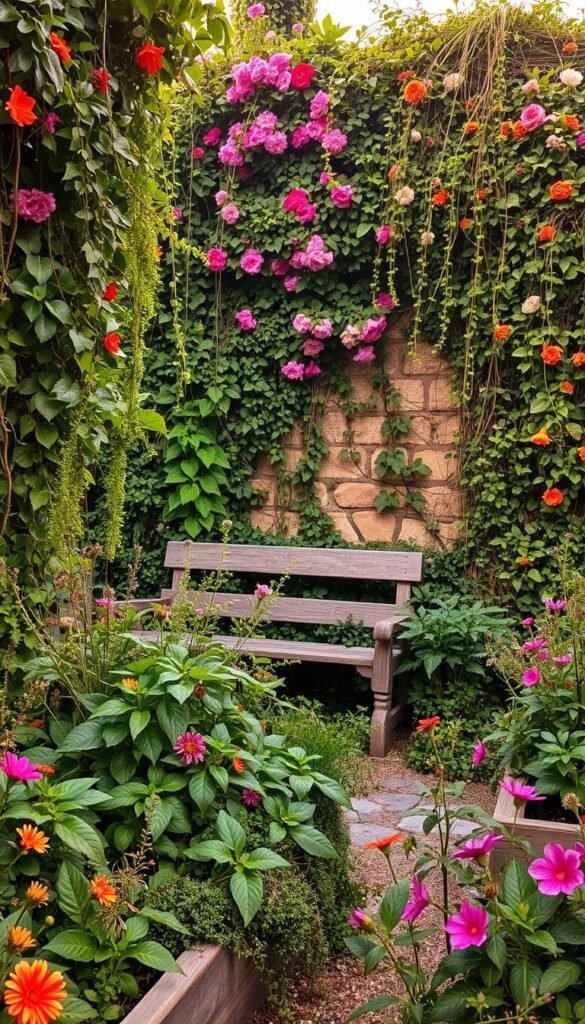
Ready to transform your outdoor space into a vibrant, self-sufficient ecosystem? The secret lies in smart preparation and trusting nature’s flow. Let’s explore how to set up your plot with minimal fuss and maximum impact.
Seed Selection Made Simple
Start with a diverse mix of native wildflowers, herbs, and veggies suited to your climate. Expert Linda Vater recommends combining quick-growing annuals like zinnias with hardy perennials such as echinacea. This creates staggered blooms and reduces replanting. Always check seed packets for phrases like “self-sowing” or “drought-tolerant”—these thrive in loose arrangements.
Effortless Space Preparation
Skip tilling—it disrupts soil structure. Instead, clear debris and scatter compost over the area. If drainage is poor, add a 1-inch layer of sand. For container gardens, use potting soil mixed with perlite. Mark boundaries with rocks or logs to define your garden space without rigid edges.
| Step | Traditional Approach | Chaos Method |
|---|---|---|
| Planting | Measured rows | Hand-toss seeds |
| Watering | Scheduled irrigation | Rain-dependent + occasional soak |
| Maintenance | Weekly weeding | Natural mulch + selective pruning |
After scattering seeds, gently rake the soil—no burying needed. Water lightly for the first week, then let rainfall take over. Add shrubs like dwarf butterfly bush at the edges for structure. Their deep roots stabilize the soil while attracting pollinators.
Remember: Your goal isn’t perfection. Let carrots cozy up to marigolds, and let clover fill gaps between stones. Nature’s surprises often become your garden’s best features.
Blending Structure with Wild Growth for a Balanced Garden
Imagine your outdoor space as a living painting where deliberate design meets nature’s spontaneity. The secret? Strategic placements that guide the eye while letting plants thrive on their terms. Start by defining edges with low-maintenance shrubs like dwarf butterfly bush or lavender. These anchor your landscape without demanding constant pruning.
Incorporating Low-Maintenance Shrubs
Shrubs act as living fences, framing wildflower patches or veggie beds. Try evergreen varieties such as boxwood for year-round structure. Pair them with self-seeding perennials like coneflowers—they’ll fill gaps naturally, reducing your effort while boosting beauty.
Creating Visual Anchors in a Wild Garden
Add focal points to tame the chaos. A stone path winding through tall grasses or a rustic bench surrounded by milkweed creates order. Use vertical elements: an arbor draped with climbing beans or a sunburst trellis for morning glories.
| Structured Element | Wild Counterpart | Combined Benefit |
|---|---|---|
| Boxwood border | Native wildflowers | Defines space + attracts pollinators |
| Raised herb bed | Creeping thyme ground cover | Easy harvest + prevents weeds |
| Stepping stones | Moss or clover between pavers | Guides movement + softens edges |
Remember: intervention works best when it solves problems. Pull invasive weeds but let beneficial “volunteers” like calendula grow. Water young plants regularly, then step back as they establish. Your approach should feel like a dance—leading sometimes, following often.
Nurturing a Healthy Ecosystem Through Gardening
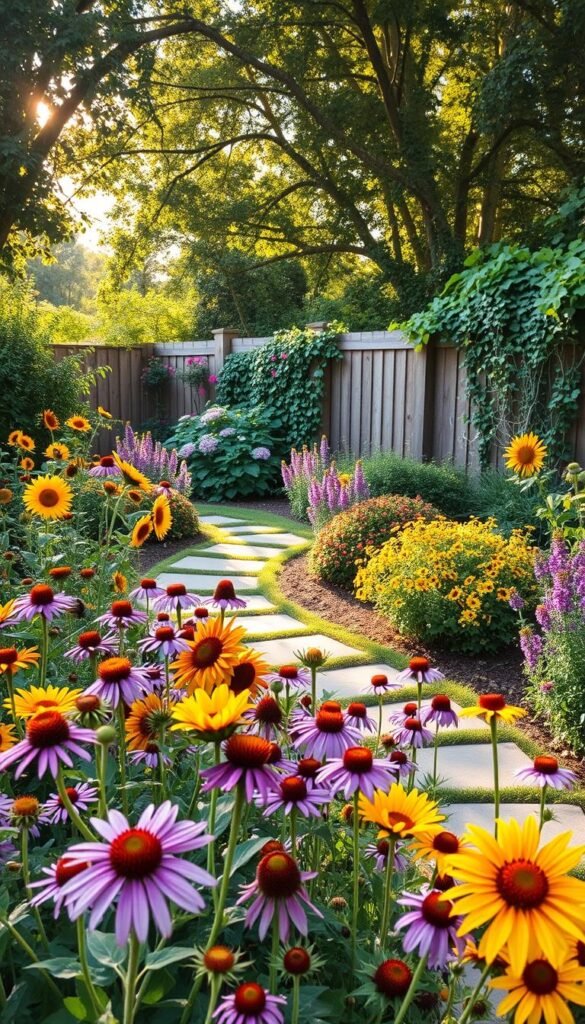
Your garden isn’t just a pretty space—it’s a living network that sustains countless creatures and enriches the earth beneath your feet. Every seed you plant and every inch of soil you nurture sends ripples through your local ecosystem. Let’s explore how mindful choices create habitats for pollinators, strengthen biodiversity, and build resilient landscapes.
Benefits for Pollinators and Soil Health
Healthy soil is the foundation of a thriving garden. When you skip synthetic chemicals and layer compost instead, you feed beneficial microbes and earthworms. These tiny workers aerate the ground, store water, and break down nutrients—key for plant health.
Pollinators like bees and butterflies rely on diverse flowers for survival. Planting native species such as milkweed or purple coneflower provides nectar while supporting their life cycles. Even small patches of clover or dandelions offer crucial food sources.
| Traditional Approach | Ecosystem-Friendly Method | Benefits |
|---|---|---|
| Monoculture planting | Mixed native seeds and veggies | Boosts biodiversity |
| Chemical pesticides | Companion planting with marigolds | Protects pollinators |
| Tilling soil annually | Mulching with leaves/grass clippings | Enhances soil structure |
Want to see quick results? Scatter a wildflower mix near your vegetable patch. Sunflowers attract aphid-eating ladybugs, while basil repels mosquitoes. This natural teamwork reduces pests without harsh sprays.
Your efforts extend beyond your fence. Gardens rich in native plants become stepping stones for wildlife, connecting fragmented habitats. By working with nature, you create a legacy of clean air, clean water, and buzzing life—one seed at a time.
Overcoming Challenges in Chaos Gardening
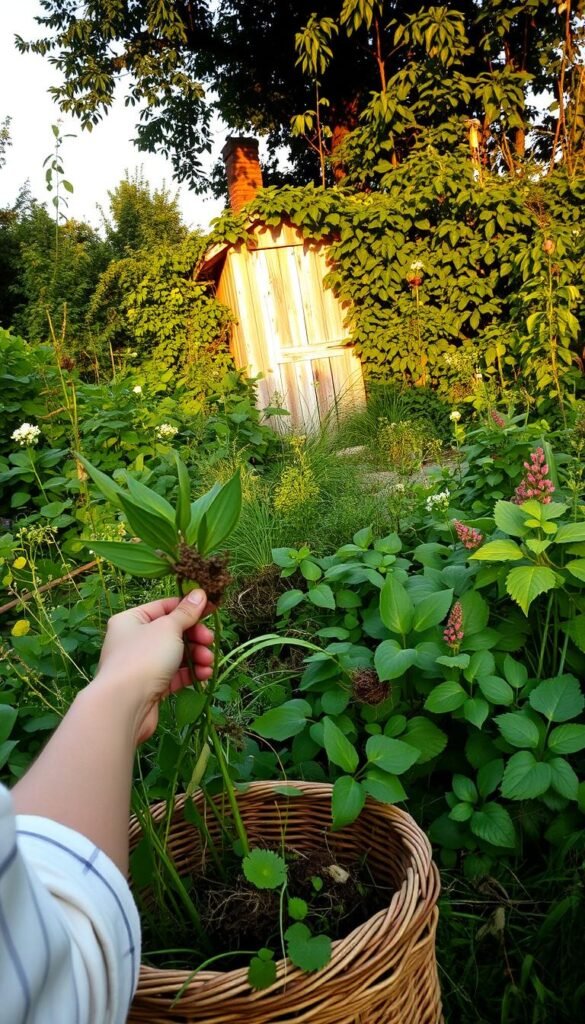
Even the most carefree gardens sometimes need gentle guidance. While embracing unpredictability is part of the fun, a few smart strategies keep your space thriving without sacrificing its wild charm.
Smart Solutions for Unruly Growth
Weeds can sneak into untamed spaces, but targeted intervention works better than weekly battles. Try hand-pulling invasive species like bindweed while leaving beneficial “volunteers” like chamomile. For persistent offenders, lay cardboard under mulch to block sunlight naturally.
Overcrowding? Thin seedlings selectively. Keep plants that support pollinators or enrich soil, like clover or borage. This edit-as-you-go approach maintains biodiversity while preventing takeover.
| Challenge | Reactive Fix | Proactive Strategy |
|---|---|---|
| Aggressive vines | Trim back monthly | Plant native ground covers |
| Poor drainage | Add sand to wet areas | Grow water-loving iris clusters |
| Seed overwhelm | Relocate seedlings | Use biodegradable seed tape |
Turning Surprises Into Strengths
When tomatoes sprout where you planned zinnias, get curious! These accidents often create perfect companion plant pairs. Track what thrives in unexpected spots—you might discover microclimates perfect for heat-loving peppers or shade-tolerant herbs.
Struggling plants? Try these moves:
- Boost leggy stems with stakes from fallen branches
- Revive pale leaves with compost tea
- Protect seedlings with milk jug cloches
Remember: Your landscape evolves with the seasons. Last year’s “weed” might become this year’s star pollinator host. By working with nature’s flow, you’ll craft a resilient space that’s wild yet welcoming.
Exploring Inspiring Chaos Gardening Success Stories
What happens when gardeners toss rulebooks aside and let creativity bloom? Across backyards and balconies, chaos gardening is proving that untamed spaces can yield jaw-dropping results. Take @meggrowsplants’ urban plot—once a patchy lawn, now a kaleidoscope of sunflowers, kale, and native milkweed. Her viral TikTok transformation shows how bold color combinations and mixed species create living art.
From Concrete to Canopy: Real-World Wins
California-based @calnaturalgardens turned a dusty slope into a pollinator paradise using this messy trend. By scattering wildflower seeds between fruit trees, they boosted food production and saw 12 new butterfly species in one season. “Our clients thought we were nuts,” they shared. “Now their kids hunt raspberries beneath towering cosmos.”
| Gardener | Approach | Outcome |
|---|---|---|
| @meggrowsplants | Mixed veggies + native blooms | 75% fewer pests, 2x harvests |
| Retiree in Ohio | Scattered seed bombs in lawn gaps | 30+ flower varieties, zero mowing |
| Urban school group | Bean teepees with marigold carpets | Classroom snacks + monarch habitat |
Social media buzz fuels these wins. When a Minnesota gardener posted her “carrot jungle” interlaced with calendula, the #ChaosGarden hashtag exploded. Followers replicated her style, praising how flowers softened veggie rows while deterring beetles.
Ready to write your own story? Start small: toss a seed mix into a neglected corner or pair tomatoes with nasturtiums. As these pioneers prove, the best gardens aren’t designed—they’re discovered.
Final Reflections on Cultivating Your Unique Gardening Style
Your garden is more than plants—it’s a story of how you work with nature’s rhythms. Whether you prefer tidy herb beds or wildflower explosions, the magic lies in blending methods. Structured layouts offer clarity, while free-form mixes invite pollinators and reduce upkeep. The best spaces often combine both, like orderly pathways framed by self-seeding blooms.
Remember: diversity fuels resilience. Scatter native seeds among veggies, or let herbs mingle with marigolds. These pairings boost biodiversity while creating microhabitats for butterflies and bees. As TikTok trends show, even small balconies can thrive with this balanced approach.
Your outdoor haven reflects your values. Maybe you’ll line raised beds with lavender or let sunflowers tower over kale. Every choice—like using compost instead of chemicals—strengthens soil health and supports local ecosystems.
There’s no single “right” way to grow. Experiment, adapt, and watch your garden evolve. Whether you’re inspired by historical cottage plots or digital-age trends, trust your instincts. After all, the most vibrant spaces bloom where intention meets nature’s spontaneity.

